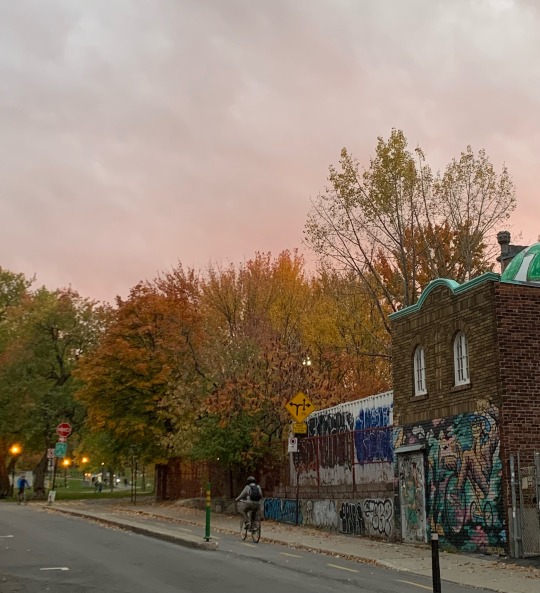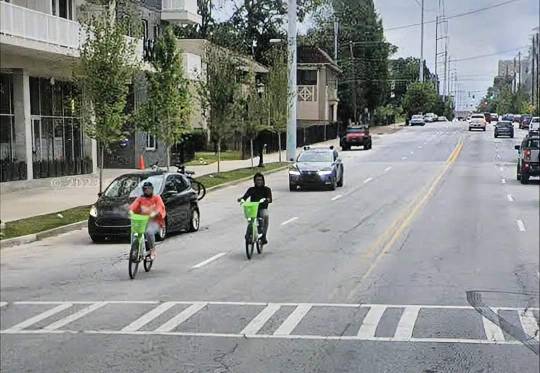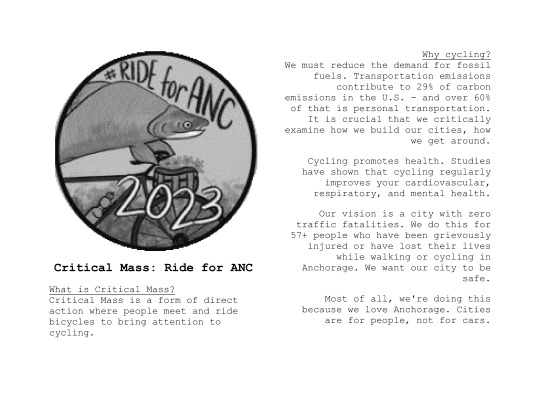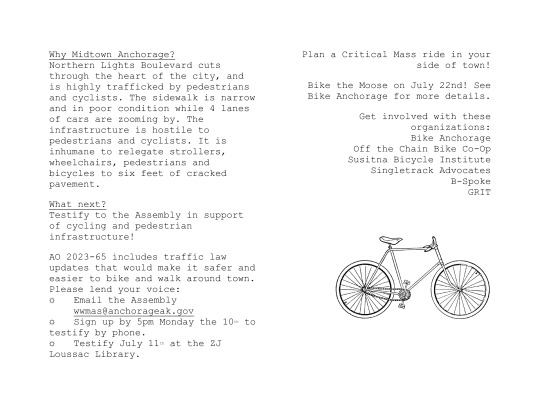#Cycling Infrastructure
Explore tagged Tumblr posts
Text

#fietsinfrastructuur#cycling infrastructure#bicycle infrastructure#infrastructures cyclables#Fahrradinfrastruktur#cykelinfrastruktur#sykkelinfrastruktur#infraestructura ciclista#infrastrutture ciclabili
10 notes
·
View notes
Text
instagram
"Having access to safe walking and cycling routes is a basic tenet of social justice."
The new Labour government in Great Britain will invest "unprecedented levels of funding" in cycling and walking as a critical part of plans to improve health, wealth inequality and the environment, has said Louise Haigh, the new secretary for transport.
"We're in a climate crisis. We're in a public health crisis. Getting people walking and cycling and moving more are essential to solving both of those," she said.
Haigh added: "Car ownership now is just so expensive, insurance as a young driver is completely out of reach for a lot of people. So having that access to safe cycle routes is a basic element, is a basic tenet of social justice."
More at bit.ly/46VOSNk
8 notes
·
View notes
Text

Rue Rachel, 2019
40 notes
·
View notes
Text
youtube
Feels like the bikepath design in this 17 second clip tried to kill the cyclist like 3 times. Like, I’ve biked all my life - including routes where I had to share the road with cars - and I’d be way too terrified to follow the bikelane’s instructions to actively weave at an angle directly into the middle of traffic
#like what the fuck guys#and don’t even get me started on the way the design changes multiple times over the course of a short distance#going from a separated lane behind a bus island (which is pretty good) to dumping you out onto the street in the middle of turning cars from#from multiple directions#and a painted lane with a few very widely spaced bollards#and then that absolute crime where it just swerves onto the middle of a three lane road#cycling#urbanism#cycling infrastructure#Youtube
6 notes
·
View notes
Text
It's taking too long to get safe routes for cyclists in Atlanta.

While looking at Google Maps photos of Boulevard (this is a couple of blocks south of North Avenue) I spotted a couple of cyclists grappling with the mixed traffic on this six-lane street.
Why have we not put bike lanes here for safety? This isn't a state road that we don't control. It's a city street that we could change tomorrow.
Why does this mess of a car-sewer still exist in 2024?
On the Atlanta DOT website, the plans for a "complete street" redesign for this part of Boulevard only state "consideration for bike lanes" 🙄 (meanwhile a linked PDF shows a concept with no bike lanes.)

Also, the project start is 2016, and the end is 2028. Ugh. This should not be acceptable by anyone in our city government. Atlanta voters have approved special taxes *twice* in the last 10 years for safer streets.
Aside from the special taxes, Atlanta is a gentrifying city with escalating land values that should be funding improvements with equitable results.
The fact that we still have a major lack of safe routes for cycling in much of the city, especially on major routes like this, is ridiculous.
#atlanta#urbanism#safe streets#street design#cycling infrastructure#bike lanes#urban planning#urban design#transportation planning
10 notes
·
View notes
Text
5 notes
·
View notes
Text
Wild Beast Alchemy

Cycling adventures of Beast & Smol
#adventure cycling#cyclinglife#cyclingphotos#gravel cycling#cyclingbeauties#cycling girls#cycling infrastructure#cycling#pro cycling#road cycling#JB5D#Wild Beast Alchemy#vegan viking biking#Bike Rides in June#Jon Burrier
13 notes
·
View notes
Text



Great turnout today!
#alaska#anchorage#environmentalism#solarpunk#cycling#cycling infrastructure#bicycling#bicycle#critical mass#rideforanc
11 notes
·
View notes
Text






#fietspad#Bike path#Fahrradweg#Piste cyclable#Cykelsti#Cykelväg#Sykkelsti#Ciclovía#Pista ciclabile#Pyörätie#stadsfietser#city cyclist#cycliste de ville#bycyklist#stadscyklist#fietsinfrastructuur#cycling infrastructure#bicycle infrastructure#infrastructures cyclables#Fahrradinfrastruktur#cykelinfrastruktur#sykkelinfrastruktur#infraestructura ciclista#infrastrutture ciclabili
4 notes
·
View notes
Text

via
16 notes
·
View notes
Text
Also add: the "why would we invest in and improve the bus because only the poors take it" mentality that prevents us all from having a world class transit system in this country!

#public transit#urbanism#cycling infrastructure#classism#inequality has been designed into our cities#it's up to us to fight to make them equal again#disability advocacy#new urbanism#transit#cities
114K notes
·
View notes
Text

Direct Action Alert! Join us Thurs. Nov. 21 as we deliver Ghost Bikes to Queen's Park while the Govt finalizes their reading of the anti-bike lane Bill 212. Meet at Matt Cohen Park at 5, ride leaves 5:30, QP meet at 5:45:
0 notes
Text

This is not so much 'bicycle infrastructure' as it is 'vehicular manslaughter'
2 notes
·
View notes
Text
Just a reminder to my European followers that the European Parliament elections are coming up and they are very important! The far-right parties are projected to win a lot of seats and many of the left/environmentalist parties are expected to do poorly.
This could have serious implications for major issues like climate action in the EU. It is very important that young people turn out to vote, EU elections typically have relatively low turnout but the composition of the EU Parliament does impact the lives of people in the European Union in a lot of ways.
#also if you're in Ireland vote in the local elections coming up as well#do you cycle?#do you want to be able to cycle on the roads without getting flattened?#vote for city council candidates that will vote for safe cycling infrastructure#EU#European Parliament
7K notes
·
View notes
Text
Are cyclists better people than drivers? A recent study published in the Journal for Environmental Psychology found that people who navigated cities by cycle were more interested in the common good than drivers. “Duh,” you’re probably saying to yourself. The study looked at a pool’s orientation toward the common good by looking at four key indicators: political participation, social participation in organizations, neighborhood solidarity, and neighborly helpfulness. Their data showed that the predominant throughline was that these folks were more likely to participate in active transportation (walking, cycling). This news isn’t necessarily new, as previous studies showed how proper urban street design can increase community engagement. But it does reinforce things we already know. How does cycling increase that orientation? Being outside helps. Finding yourself around other people makes you more likely to have spontaneous contact. Navigating a community on foot or by bike gives you a better sense of what your built environment is like and a stronger emotional bond around your neighborhood. That bond, the study says, leads folks to be more likely to be active participants in a community’s direction. In contrast, being in a car removes those sensory connections. A driver’s interaction is predominantly with the origin and destination of their travel, removing them from the diversity within a community. This isolation can lead to more individualistic behaviors, many of which reduce opportunities for social interaction. It’s much easier to be a jerk to someone outside when you’re isolated in a two-ton hunk of metal and glass, as we can all agree on.
#Urbanism#Urban Planning#Cycling Infrastructure#Bicycle Infrastructure#Cycling#Urban Planning and Development#Cities
0 notes
Text


Here is a digital version of the zine from today's Critical Mass event in Anchorage, AK!
#zine#alaska#anchorage#environmentalism#solarpunk#cycling stuff#cycling#cycling infrastructure#critical mass#bicycling#bicycle#rideforanc
8 notes
·
View notes